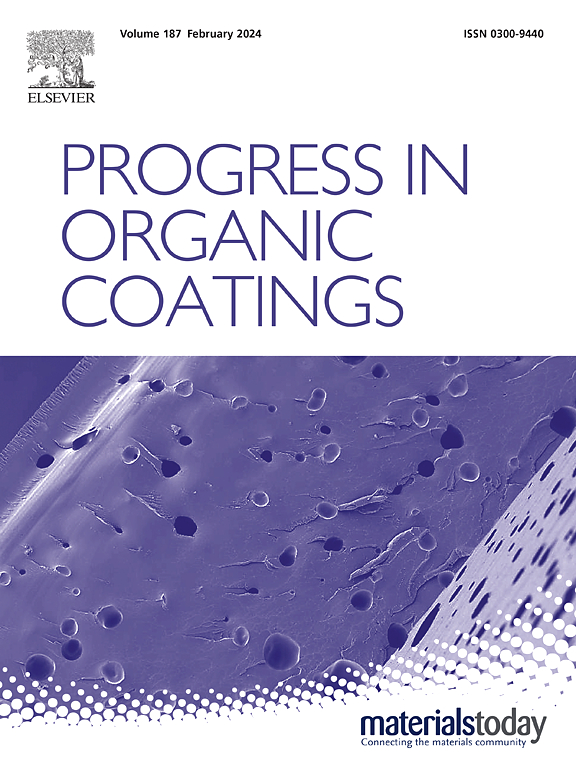聚丙烯酸钠负载聚磷酸铵与 ScYSZ 结合使用对提高环氧聚酰胺涂料阻燃性和隔热性能的协同效应
IF 6.5
2区 材料科学
Q1 CHEMISTRY, APPLIED
引用次数: 0
摘要
本文章由计算机程序翻译,如有差异,请以英文原文为准。
Synergistic effects of sodium polyacrylate-loaded ammonium polyphosphate in combination with ScYSZ to enhance the flame retardancy and thermal insulation properties of epoxy-polyamide coatings
In this study, a “three-source” intumescent flame-retardant SAPP, obtained by the modification of ammonium polyphosphate (APP) with low-crosslinked sodium polyacrylate (SAP), was employed to enhance the fire resistance properties of epoxy-polyamide (EP) coatings. Scandia and yttria-co-stabilized zirconia (ScYSZ) compound, was incorporated into SAPP/EP to enhance the flame retardancy and thermal insulation properties. It was found that, the incorporation of 19.4 wt% SAPP and 3.2 wt% ScYSZ into the EP coating (S-SAPP/EP2), achieved a limiting oxygen index (LOI) of 31.3 % and corresponded to a UL-94 V-0 rating. Additionally, use of the cone calorimeter test (CCT) combined with the thermogravimetry test (TG) revealed that the binary intumescent flame-retardant (IFR)–metal oxide system could endow the EP coatings with superior synergistic effects to enhance their flame retardancy, smoke suppression, charring, and thermal insulation properties. Compared with pure EP, the total heat release (THR) and the total smoke production (TSP) of S-SAPP/EP2 were reduced by 61.3 % and 67.8 %, respectively, which are also superior reductions to those achieved for SAPP/EP. Moreover, further analysis of the char residues of S-SAPP/EP2 showed that the binary IFR–metal oxide system endowed the EP coatings with a superior synergistic effect for the generation of crosslinking and P–O–C aromatic structures during combustion, which effectively contributed to the formation of a high-quality char layer and the highest thermal insulation properties reported for EP coatings.
求助全文
通过发布文献求助,成功后即可免费获取论文全文。
去求助
来源期刊

Progress in Organic Coatings
工程技术-材料科学:膜
CiteScore
11.40
自引率
15.20%
发文量
577
审稿时长
48 days
期刊介绍:
The aim of this international journal is to analyse and publicise the progress and current state of knowledge in the field of organic coatings and related materials. The Editors and the Editorial Board members will solicit both review and research papers from academic and industrial scientists who are actively engaged in research and development or, in the case of review papers, have extensive experience in the subject to be reviewed. Unsolicited manuscripts will be accepted if they meet the journal''s requirements. The journal publishes papers dealing with such subjects as:
• Chemical, physical and technological properties of organic coatings and related materials
• Problems and methods of preparation, manufacture and application of these materials
• Performance, testing and analysis.
 求助内容:
求助内容: 应助结果提醒方式:
应助结果提醒方式:


